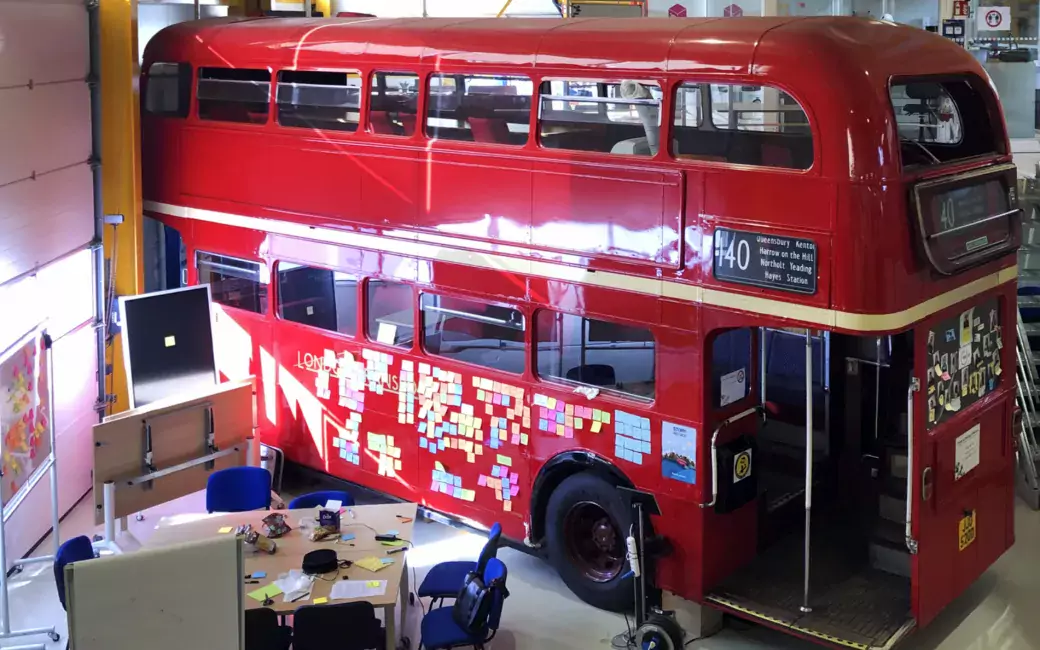How can we improve urban sustainability? At the CERN BootCamp, a group of students learned that the primary way to effect change is to impact people's thinking.

Juniper Tyree was studying environmental computer science for the fifth year when they applied to the CERN BootCamp last spring. A group of 24 students was divided into four groups at the initial meeting of the course in March 2022.
The course culminated in a five-day sprint at CERN in Geneva, where the expertise available at numerous international organisations and the inspiring atmosphere helped each group to imagine and prototype a project to increase sustainability.
During the final days, Team Citizens of Babylon, the group Tyree was a part of, brainstormed a sustainability contest that would appeal to the public's emotions.
Innovating and joint developing
At the CERN BootCamp, students learn through practice how to solve social problems with the help of innovations, co-creation, and service design. Annually, a couple of dozen Finnish students attend the course that is repeated each spring-early summer and yields 10 credit points.
CERN BootCamps have been organised since 2017 in cooperation between CERN, the Helsinki Institute of Physics with its five member universities, and three universities of applied sciences: Laurea, Haaga-Helia, and Metropolia. Master's students at these institutions can apply to the course.
Juniper Tyree's group was given the assignment to find solutions for sustainable cities and communities in accordance with paragraph 11 of the UN Sustainable Development Agenda, where the goal is to guarantee safe and sustainable cities and human dwellings. So how could cities slow down climate change and adapt to the changes it will bring?
Activate people
During the spring, Tyree's group absorbed a wide range of knowledge on urban sustainability, as well as conceptualising and innovating. The backgrounds of the group members were diverse, which proved useful to the group; some of them had already studied service design and others for example environmental topics. In spring, the group also conducted interviews in Finland and arranged interviews at CERN.
"The course encouraged us to contact top experts at CERN and the area of Geneva, whose advice on the promotion of sustainability changes was the best part of the course," says Tyree.
Tyree especially remembers the teachings of Dr Paola Deda, the director of the Forests, Land and Housing Division at UNECE, and Dr Agata Krause, then the head of the 2030 Agenda at the Centre for Sustainable Development in Trondheim. According to them, no smart technology solution will suffice if the whole community does not get involved and solutions are not tailored to each local community. We can get people involved through actions on a local scale, such as urban greening, and through better communication between cities and their citizens.
At CERN, the group used such working methods as the six hats, where the idea is to look at problems from different viewpoints and to feel comfortable to share wild ideas. The sprint deadline crystallised the group's thoughts about community and communication into an idea about a sustainability city contest.
Let's party and share solutions
The group developed an interactive prototype that was presented to the participants at the end of the course. The prototype contained two sections of the competition for sustainable cities: the Battle of Ideas and the Preparedness challenge.
In the competition, which is held at city-wide, regional, country-wide, and finally the international level, cities show off how sustainable and well-prepared they are. In the Battle of Ideas, each city (or smaller community) showcases one sustainability project which they have successfully implemented, hoping to positively inspire other cities with stories of success and cross-pollination of ideas.
During the physical challenge section of the competition, each city also sends a team of their crisis management team to demonstrate their preparedness for challenges caused by the climate crisis. The audience at the venue and online could vote for a certain preparedness challenge that the competing teams would have to approach and solve on-stage. The teams could consist of e.g. fire fighters and officials.
After the presentations, both the public and a jury consisting of officials from the UN, the EU, and a few NGOs focused on sustainable development would score the teams and provide feedback. In this way, the presentation could be both entertaining and educational.
Who might be the Käärijä or Loreen in this competition and win in the area of sustainability?






